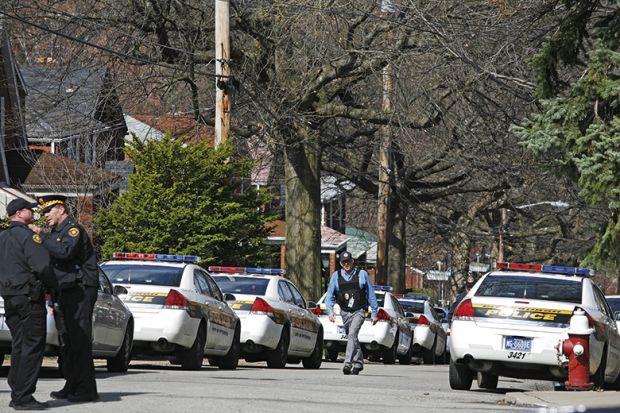It took a car, a knife and 82 seconds for Britain to come to a shocked standstill of uncertainty and grief in the wake of the 22 March Westminster attack. In the deadliest act of terrorism since 7 July 2005, four pedestrians were mowed down by a “self-radicalised” jihadi Islamist, Khalid Masood, who then crashed his Hyundai Tucson into the parliamentary estate and stabbed an unarmed police officer to death before then being “suicided by cop”. Masood perfectly represented “the new blended threat of terrorism” today: a “homegrown extremist” – often a white supremacist – and a Daesh-inspired, self-activating “copycat” terrorist (the Nice and Berlin vehicle attacks took place on 14 July 2016 and 19 December 2016, respectively).
Welcome to The Age of Lone Wolf Terrorism. So announce Mark Hamm and Ramón Spaaij in an, at times, grandiloquent yet genuinely indispensable study of today’s steadily increasing terrorist threat (although one, it should be remembered, still less lethal, on average, than bathtubs or lawnmowers in North America and Europe). Terminology is one of this book’s great strengths – including all the scare-quoted terms above – extending to the contentious term “lone wolf terrorist”, which is often pilloried as “romanticising” or imprecise, but here is given a full-throated defence as both a widely accepted phrase and “useful analytical tool”.
Indispensable monographs in terrorism studies are hard to come by. In a field where, the authors tell us, a book is published every six hours, this is a real work of distinction. Although it focuses entirely upon American instances of lone-wolf terrorism between 1940 and mid 2016, the conceptual clarity and mixed-methods approach are widely applicable beyond the US. Underpinning the latter methodology are 123 case studies subjected to a sophisticated quantitative analysis that has been notably lacking until recent years. For example, in the killing or wounding of 258 people in 84 attacks by lone wolves listed in the appendix since 9/11 (the central dividing line in this study), 42 used firearms; and, of those, half used multiple weapons and 38 per cent used a single handgun.
The book’s pivotal contention, without doubt, is that there is a discernible pattern of lone wolf terrorist radicalisation: “the integration of personal and political grievances; an affinity with online sympathizers and/or extremist groups; an interest in enablers who often operate as stochastic terrorists; the all-important broadcasting of terrorist intent; and triggering events that, oftentimes, cause a dramatic change in behavior”. The authors stress that this is intended as a “heuristic device”, not a “lock-step sequential model”. This means that “enablers” – exemplified here by Anwar al-Awlaki’s online sermons and Infowars’ Alex Jones – can come at the start or end of a violent radicalisation process, just as the broadcasting of intent can occur over a much longer period than with organised terrorist groups.
Chapters correspond to the five phases of the radicalisation model above, amplified by three paradigmatic case studies. Other instances of this “thick description” are interspersed throughout, culminating in especially harsh criticism for the FBI’s “create and capture” stings, which the authors contend “enable and sometimes facilitate vulnerable people into planned acts they would be otherwise unable or unwilling to commit”. Hamm and Spaaij are right here, too; the case studies provided of Quazi Nafis and Sami Hassoun are real shockers.
Matthew Feldman is professor of contemporary history and co-director of the Centre for Fascist, Anti-Fascist and Post-Fascist Studies at Teesside University.
The Age of Lone Wolf Terrorism
By Mark S. Hamm and Ramón Spaaij
Columbia University Press, 336pp, £27.95
ISBN 9780231181747
Published 6 June 2017
Register to continue
Why register?
- Registration is free and only takes a moment
- Once registered, you can read 3 articles a month
- Sign up for our newsletter
Subscribe
Or subscribe for unlimited access to:
- Unlimited access to news, views, insights & reviews
- Digital editions
- Digital access to THE’s university and college rankings analysis
Already registered or a current subscriber?




